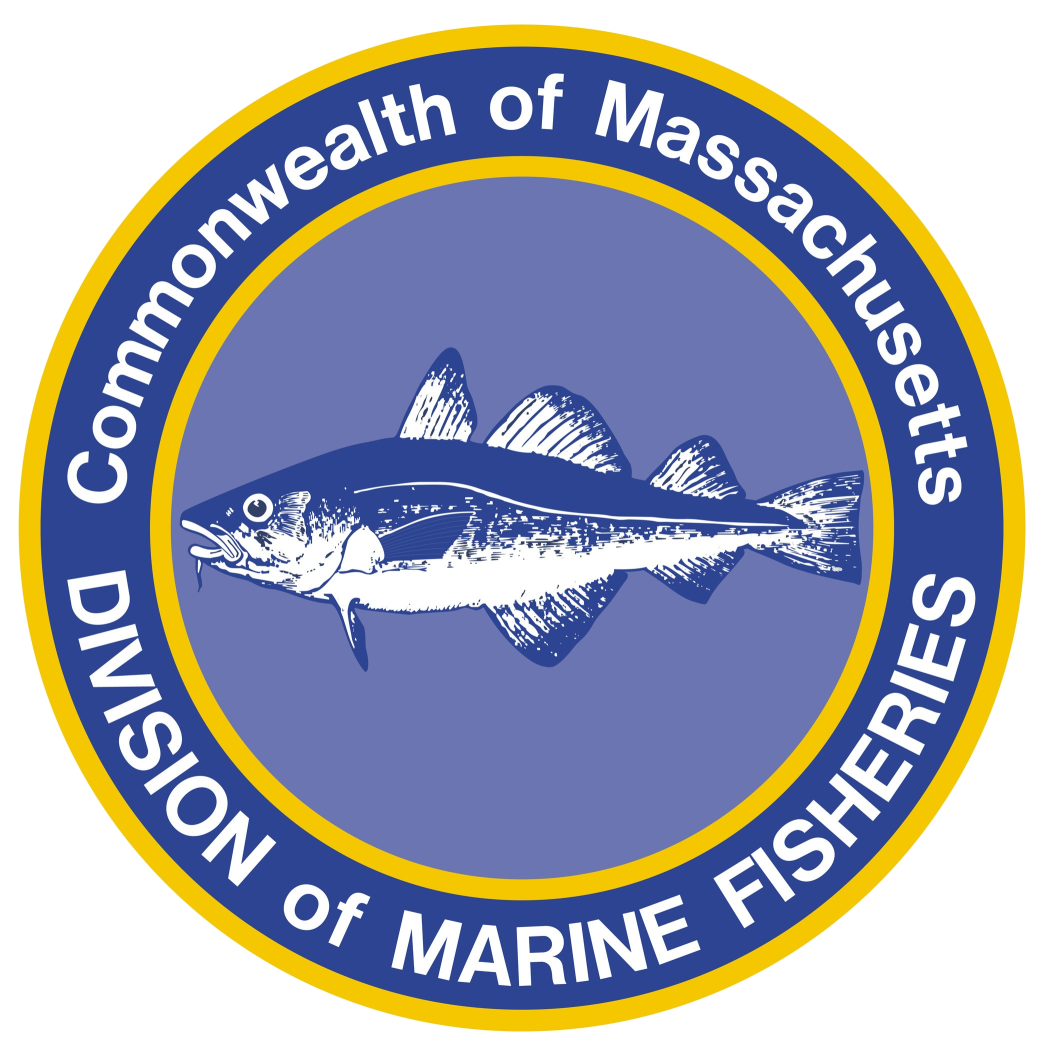- Division of Marine Fisheries
In spring 2022, the Massachusetts coast once again played host to large aggregations of North Atlantic right whales. Seasonal feeding aggregations were observed in both traditional right whale habitats like Cape Cod Bay and in newly utilized areas like Massachusetts Bay and the North Shore. The Massachusetts Restricted Area (MRA), a seasonal trap gear closure, was geographically expanded in 2021 to state waters portions of Mass Bay and the North Shore to protect right whales that have recently extended their distribution to those areas. The importance of that expanded closure was demonstrated in 2022, as the Center for Coastal Studies (CCS) aerial surveillance team observed aggregations of right whales in Massachusetts Bay, Salem Sound, and off Gloucester. Since 2021, DMF and CCS has broadened aerial survey coverage to include the northern portions of the MRA.
Right whales were also present in large numbers in Cape Cod Bay in 2022, as is typical of their distribution. A season high of 99 individual whales was documented in CCB at the end of February. The seasonal trap gear closure in MA state waters runs through May 15 to protect right whale aggregations that now linger into mid-May.
Over the course of the 2022 season, at least 73% (n=247) of the known right whale population was documented in Massachusetts state waters and adjacent federal waters, including 10 of the 15 calves born in 2022. The CCS team is continuing to analyze photos from the season and the number of whales observed is likely to increase.
To ensure the expanded MRA is free of any derelict gear that might pose an entanglement risk, DMF partners with the Massachusetts Environmental Police (MEP) and commercial fishermen to remove any gear that is lost or abandoned in the closed area. In 2022, these efforts removed approximately 2,000 traps and 500 buoy lines, mainly from Mass Bay and the North Shore where the closure is still relatively new. Enforcement actions related to these violations are likely to assist in improved compliance in the future and DMF will continue to monitor for and remove derelict gear during the closed season. The accompanying article on page 1 provides more details on this gear removal program.
With a large portion of the right whale population aggregating in Massachusetts, it is critical to protect them from entanglement and vessel collision while in our waters. In addition to the expanded MRA, DMF recently implemented other protected species regulations affecting trap/pot fisheries in Massachusetts, including the requirement to modify buoy lines to break under 1,700 pounds of tension, expanded gear marking, and buoy line diameter restrictions. The purpose of the closure is to protect seasonal aggregations of feeding right whales from entanglement in fishing gear, while weaker buoy lines will reduce the potential for injury or mortality caused by entanglements, should they occur, and expanded buoy line marking and diameter restrictions will allow researchers to more clearly detect or eliminate the possibility that Massachusetts gear was involved in an entanglement.
The new regulations were necessary because of amendments to the Atlantic Large Whale Take Reduction Plan, ongoing litigation against the Commonwealth of Massachusetts regarding endangered species, and the vulnerable state of the right whale population. DMF has been ordered by a federal judge to apply for an Incidental Take Permit (ITP) under the Endangered Species Act and these new regulations will be incorporated into the Habitat Conservation Plan (HCP), a key component of the ITP which must detail steps DMF is taking to minimize and mitigate impacts the fishery would have on endangered species. These measures represent significant action by DMF and the industry to reduce the risk of right whale entanglements in fixed gear. DMF has worked with NOAA Fisheries to evaluate the risk reduction associated with the regulations and found these measures reduce risk in Massachusetts state waters by over 90%. Based on these important conservation measures, which are unique to Massachusetts, NOAA Fisheries reclassified the MA trap/pot fishery as separate from the larger Northeast lobster fishery under the List of Fisheries, giving it a Category II designation. DMF is in the process of finalizing its Habitat Conservation Plan and Incidental Take Permit and will submit a draft to NOAA Fisheries in July 2022.
By Erin Burke, Protected Species Specialist
